Kamakura-Era Wealth: 100,000 Coins Found at Japanese Construction Site
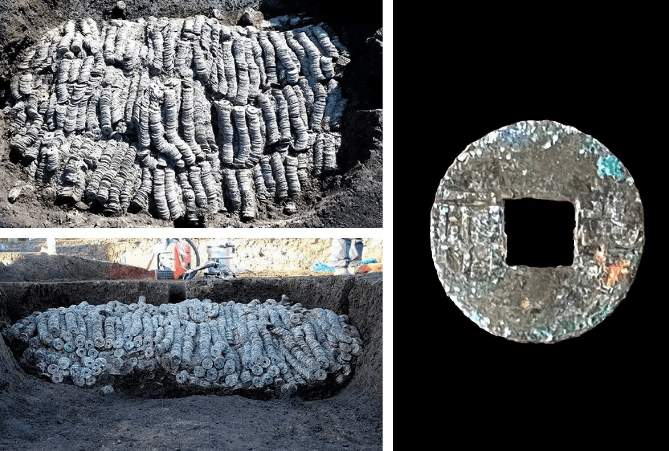
In a remarkable discovery that has captivated historians and archaeologists alike, a treasure trove of over 100,000 ancient coins was recently uncovered at a construction site in Maebashi City, Japan. This find is one of the largest coin discoveries ever recorded in the country and provides a fascinating glimpse into Japan’s rich historical tapestry. As the excavation continues, the significance of these coins sheds light on the country’s past, particularly during the Kamakura Period.
A Remarkable Discovery
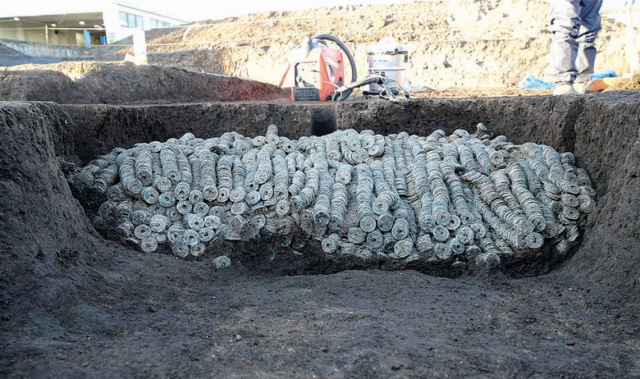
The discovery took place in Maebashi City, located approximately 70 miles northwest of Tokyo. As construction workers dug into the earth, they unearthed a massive cache of tarnished coins buried just inches below the surface. The coins were found in neatly stacked bundles, with remnants of rice straw mats at the bottom of the pit, suggesting that they were carefully stored before being buried.
Coins from Across the Ages
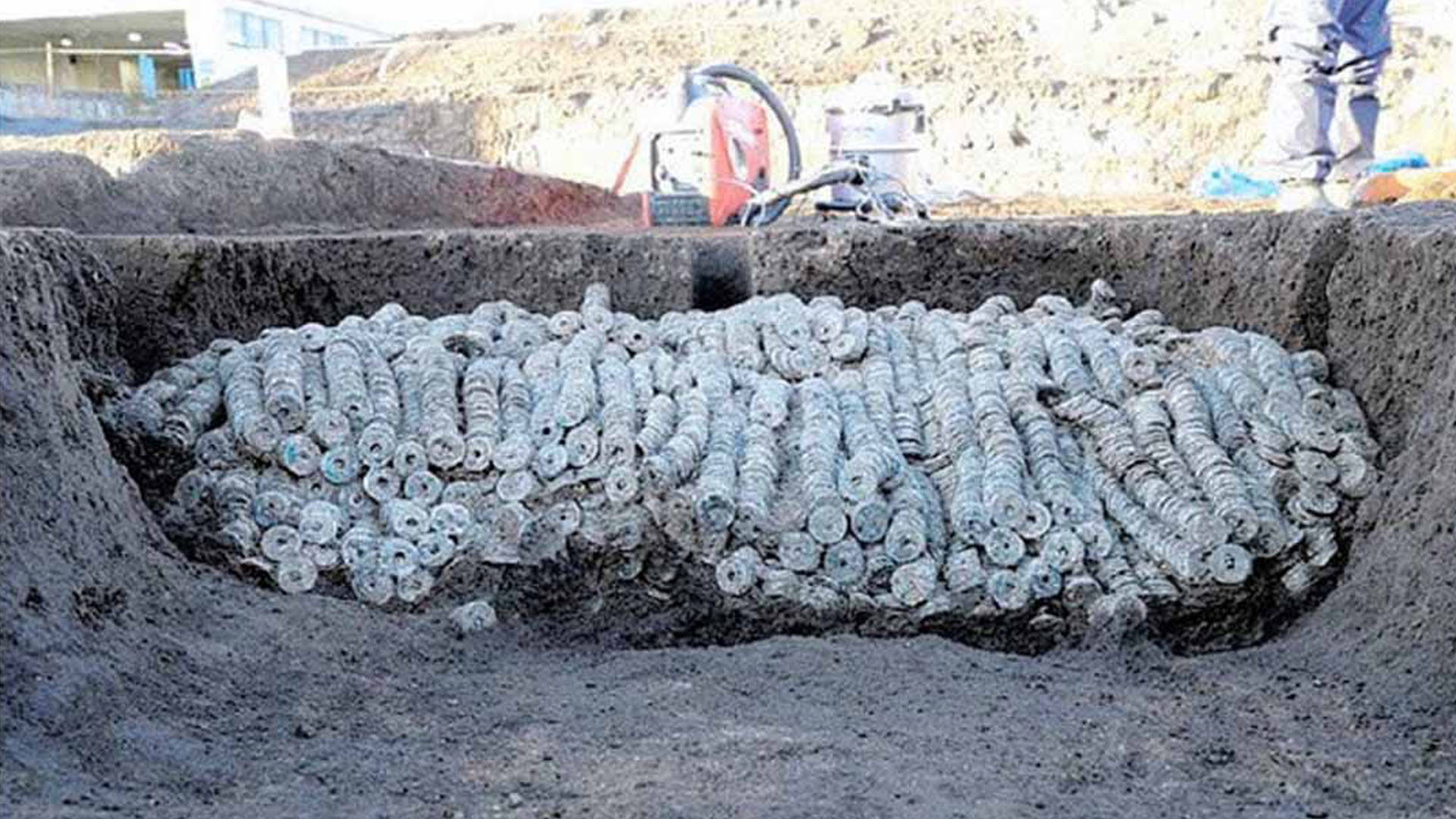
Among the coins, officials identified pieces from various periods, including some from China. The oldest coin, dating back to 175 B.C., was minted during the Western Han Dynasty in China. This coin, which features a square hole and several distinct markings, is one of the earliest examples of currency from unified China. The newest coin in the collection was minted in 1265 A.D., suggesting that the treasure was likely buried during Japan’s Kamakura Period, which spanned from 1185 A.D. to 1333 A.D.
The Kamakura Period: A Time of Transformation
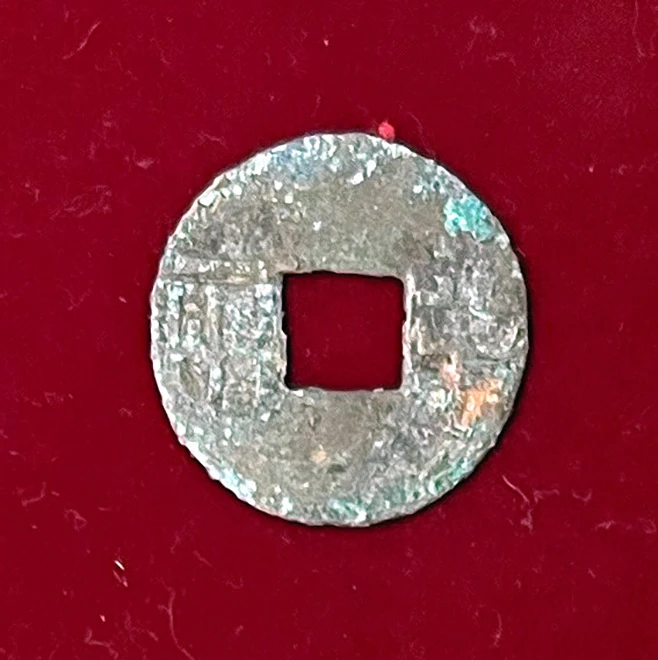
The Kamakura Period was a pivotal era in Japanese history, marked by significant political changes. During this time, the military, led by the shogunate, gradually took control from the nobility, leading to a shift in power dynamics within the country. The discovery of this large coin collection, hidden away for safekeeping, likely reflects the turbulent nature of this period, where the anticipation of war and political unrest may have prompted someone to bury their wealth.
A Rare Find with Growing Significance
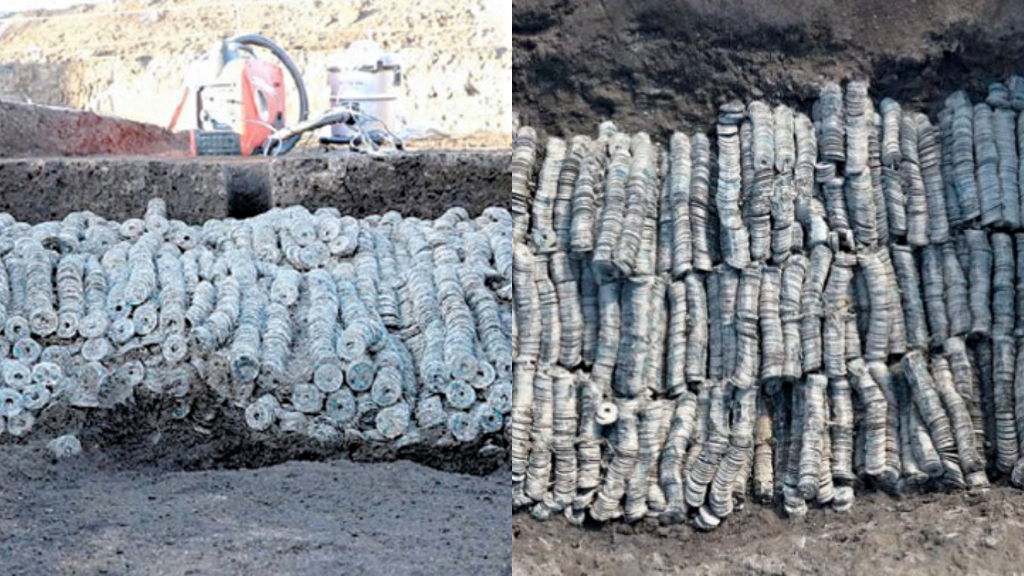
While discoveries of coin troves of this magnitude are rare, Japan has seen an increase in the number of old coins unearthed at archaeological sites in recent years. This surge in findings suggests that there is still much to learn about the country’s historical periods through the lens of currency. The Maebashi coin trove, with its vast assortment of coins spanning centuries, offers valuable insights into the economic and political landscapes of Japan’s past.
Conclusion
The unearthing of over 100,000 ancient coins in Maebashi City stands as a monumental discovery in Japanese archaeology. These coins not only serve as a testament to the historical richness of the Kamakura Period but also highlight the intricate connections between Japan and other regions, such as China, through trade and cultural exchange. As experts continue to study this treasure trove, it will undoubtedly enhance our understanding of Japan’s past, providing a tangible link to the lives and times of those who lived centuries ago.
Video
News
The Hanging Temple: China’s 1,500-Year-Old Cliffside Marvel of Faith and Engineering
The Hanging Temple: China’s 1,500-Year-Old Cliffside Marvel of Faith and Engineering Perched precariously on the cliffs of Mount Heng in Shanxi Province, China, the Hanging Temple, also known as Xuankong Temple, Hengshan Hanging Temple, or Hanging Monastery, is an architectural…
The Willendorf Venus: A 30,000-Year-Old Masterpiece Reveals Astonishing Secrets
The Willendorf Venus: A 30,000-Year-Old Masterpiece Reveals Astonishing Secrets The “Willendorf Venus” stands as one of the most revered archaeological treasures from the Upper Paleolithic era. Discovered in 1908 by scientist Johann Veran near Willendorf, Austria, this small yet profound…
Unveiling the Maya: Hallucinogens and Rituals Beneath the Yucatán Ball Courts
Unveiling the Maya: Hallucinogens and Rituals Beneath the Yucatán Ball Courts New archaeological research has uncovered intriguing insights into the ritual practices of the ancient Maya civilization. The focus of this study is a ceremonial offering found beneath the sediment…
Uncovering the Oldest Agricultural Machine: The Threshing Sledge’s Neolithic Origins
Uncovering the Oldest Agricultural Machine: The Threshing Sledge’s Neolithic Origins The history of agricultural innovation is a fascinating journey that spans thousands of years, and one of the earliest known agricultural machines is the threshing sledge. Recently, a groundbreaking study…
Nara’s Ancient Sword: A 1,600-Year-Old Protector Against Evil Spirits
Nara’s Ancient Sword: A 1,600-Year-Old Protector Against Evil Spirits In a remarkable discovery that has captured the attention of archaeologists and historians alike, a 7.5-foot-long iron sword was unearthed from a 1,600-year-old burial mound in Nara, Japan. This oversized weapon,…
The Inflatable Plane, Dropped Behind the Lines for Downed Pilots
Experimental The Inflatable Plane, Dropped Behind the Lines for Downed Pilots The Inflatoplane from Goodyear was an unconventional aircraft developed by the Goodyear Aircraft Company, a branch of the renowned Goodyear Tire and Rubber Company, also famed for the Goodyear…
End of content
No more pages to load











